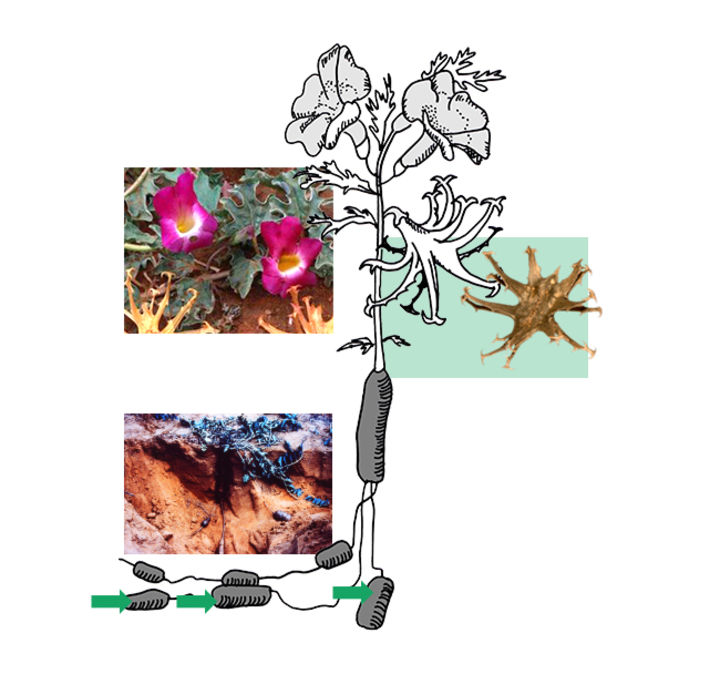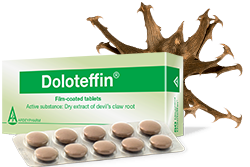Devil’s claw – the active pharmaceutical ingredient in Doloteffin
- Plant: Harpagophytum procumbens De Candolle
- Family: Pedaliaceae (sesame plants)
- Origin: Southern Africa
- Drug/Pharmaceutically used part of plant: secondary storage roots
Devil’s claw (Harpagophytum procumbens) is a plant which is native to the savannahs of the Kalahari in South Africa and Namibia. The plant carries red-violet, foxglove-like blossoms, several centimetres in length from which a lignified fruit with anchor-like hooks emerge. The fruit can attach to the fur or the feet of animals and in this way the seeds are spread. The claw-like structures give the plant its name “Devil’s claw” and the genus “Harpagophytum” (harpax = grappling hook).
The roots which penetrate deep into the earth form tubers to store water. Only these organs of the plant are used therapeutically.

Doloteffin – established phytopharmaceutical conforms to WHO and EMEA guidelines*
- The plant parts used for Doloteffin stem from ecologically acceptable harvests. This form of wild harvesting is sparing to the main root, so that the plant regenerates again very quickly. No fertilisers or other chemical plant protection agents are used.
- To further protect our nature: To avoid excessive wild harvesting of the herb, extracts used for Doloteffin are also sustainable produced, in part, by using cultivated plants.
- Using the most modern technical processes, a particularly aqueous extract for Doloteffin is obtained under strict conditions from the plant parts, so that a uniform high level of quality is ensured in the finished preparation.
- Harvesting is carried out manually
- Drying of the plants is performed naturally
* WHO guidelines on good agricultural and collection practices for medicinal plants. (Geneva : World Health Organization, 2003)
EMEA guideline on good agricultural and collection practices (GACP) for starting materials of herbal origin. (EMEA/HMPC/246816/2005)

